-
 Bitcoin
Bitcoin $104,518.3450
-0.42% -
 Ethereum
Ethereum $2,512.3818
-3.11% -
 Tether USDt
Tether USDt $1.0009
0.05% -
 XRP
XRP $2.1747
-1.43% -
 BNB
BNB $650.6384
-1.78% -
 Solana
Solana $151.7246
0.21% -
 USDC
USDC $1.0000
0.03% -
 Dogecoin
Dogecoin $0.1804
-5.21% -
 TRON
TRON $0.2796
2.33% -
 Cardano
Cardano $0.6637
-2.22% -
 Hyperliquid
Hyperliquid $35.2793
1.41% -
 Sui
Sui $3.1800
0.77% -
 Chainlink
Chainlink $13.4056
-2.44% -
 Avalanche
Avalanche $19.7003
-2.24% -
 UNUS SED LEO
UNUS SED LEO $8.9558
-2.16% -
 Stellar
Stellar $0.2649
-0.25% -
 Toncoin
Toncoin $3.1696
-1.92% -
 Bitcoin Cash
Bitcoin Cash $390.1579
-2.95% -
 Shiba Inu
Shiba Inu $0.0...01266
-1.09% -
 Hedera
Hedera $0.1681
0.43% -
 Litecoin
Litecoin $86.1338
-2.05% -
 Polkadot
Polkadot $3.9707
-1.10% -
 Monero
Monero $334.4117
-0.10% -
 Ethena USDe
Ethena USDe $1.0013
0.03% -
 Bitget Token
Bitget Token $4.6339
-0.73% -
 Dai
Dai $1.0000
0.03% -
 Pepe
Pepe $0.0...01131
-3.13% -
 Pi
Pi $0.6218
-1.89% -
 Aave
Aave $252.1665
-3.47% -
 Uniswap
Uniswap $6.0735
-3.96%
How to set the stochastic oscillator? What are the fast and slow line parameters?
The stochastic oscillator, ranging from 0 to 100, uses %K and %D lines to signal overbought (>80) and oversold (<20) conditions in crypto trading.
May 29, 2025 at 10:49 am
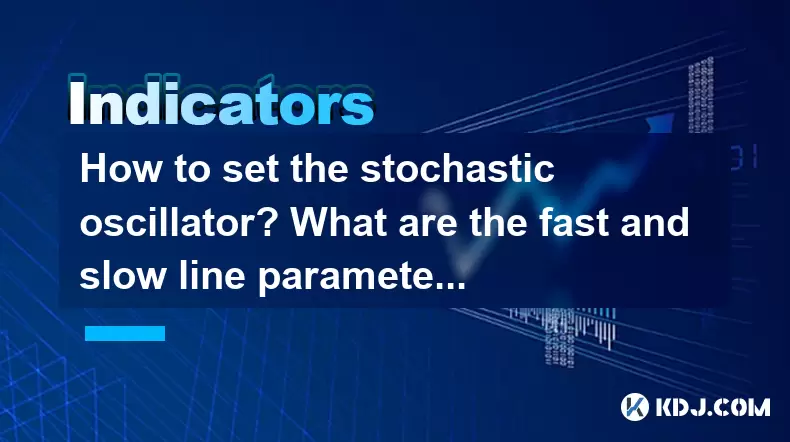
The stochastic oscillator is a popular momentum indicator used in the cryptocurrency trading world to predict price movements by comparing the closing price of a cryptocurrency to its price range over a certain period. Understanding how to set up and interpret the stochastic oscillator is crucial for traders looking to make informed decisions. In this article, we will delve into the process of setting up the stochastic oscillator, discuss the parameters of the fast and slow lines, and explore how these settings can be optimized for cryptocurrency trading.
Understanding the Stochastic Oscillator
The stochastic oscillator is based on the premise that in an uptrend, prices tend to close near the high, and in a downtrend, prices tend to close near the low. The formula for the stochastic oscillator involves two lines: the %K line (fast line) and the %D line (slow line). These lines help traders identify potential overbought and oversold conditions in the market. The oscillator ranges between 0 and 100, with readings above 80 typically indicating overbought conditions and readings below 20 indicating oversold conditions.
Setting Up the Stochastic Oscillator
To set up the stochastic oscillator on your trading platform, follow these steps:
- Open your trading platform and navigate to the indicators section. This is usually found under a tab labeled "Indicators" or "Studies."
- Search for the stochastic oscillator. It may be listed as "Stochastic" or "Stochastic Oscillator."
- Click on the stochastic oscillator to add it to your chart. A settings window will appear, allowing you to customize the parameters.
- Adjust the parameters for the %K and %D lines. The default settings are often 14 for the %K period, 3 for the %D period, and 3 for the smoothing period. However, these can be adjusted based on your trading strategy.
- Confirm the settings and apply the oscillator to your chart. The stochastic oscillator will now appear on your chart, displaying the %K and %D lines.
Fast Line (%K) Parameters
The fast line, or %K, is the primary line of the stochastic oscillator. It measures the current price relative to the high-low range over a specified period. The default setting for the %K period is typically 14, which means the oscillator calculates the highest high and lowest low over the last 14 periods.
- A shorter %K period (e.g., 5 or 10) will make the oscillator more sensitive to price changes, potentially leading to more frequent buy and sell signals.
- A longer %K period (e.g., 20 or 25) will smooth out the oscillator, reducing the frequency of signals but potentially increasing their reliability.
Slow Line (%D) Parameters
The slow line, or %D, is a moving average of the %K line, typically calculated over three periods. The %D line helps to smooth out the fluctuations of the %K line, providing a more reliable signal for traders. The default setting for the %D period is usually 3, but this can be adjusted to suit different trading strategies.
- A shorter %D period (e.g., 1 or 2) will make the %D line more responsive to changes in the %K line, potentially leading to more trading signals.
- A longer %D period (e.g., 5 or 7) will smooth out the %D line, reducing the frequency of signals but potentially increasing their accuracy.
Optimizing Stochastic Oscillator Settings for Cryptocurrency Trading
Cryptocurrency markets are known for their volatility, which can affect the effectiveness of technical indicators like the stochastic oscillator. To optimize the stochastic oscillator for cryptocurrency trading, consider the following adjustments:
- Short-term trading: For traders focusing on short-term price movements, consider using a shorter %K period (e.g., 5 or 10) and a shorter %D period (e.g., 1 or 2). This setup will make the oscillator more sensitive to price changes, allowing for quicker entry and exit points.
- Long-term trading: For traders with a longer-term perspective, a longer %K period (e.g., 20 or 25) and a longer %D period (e.g., 5 or 7) may be more suitable. This setup will smooth out the oscillator, reducing false signals and providing more reliable trading opportunities.
- Volatility adjustments: During periods of high volatility, consider adjusting the %K period to a shorter timeframe to capture rapid price movements. Conversely, during periods of low volatility, a longer %K period may be more effective in filtering out noise.
Interpreting the Stochastic Oscillator
Understanding how to interpret the stochastic oscillator is essential for making informed trading decisions. Here are some key points to consider:
- Overbought and oversold conditions: When the oscillator rises above 80, it indicates that the cryptocurrency may be overbought, suggesting a potential price correction. Conversely, when the oscillator falls below 20, it suggests that the cryptocurrency may be oversold, indicating a potential price rebound.
- Crossovers: A bullish signal occurs when the %K line crosses above the %D line, especially when both lines are below 20. A bearish signal occurs when the %K line crosses below the %D line, particularly when both lines are above 80.
- Divergence: If the price of the cryptocurrency is making new highs while the stochastic oscillator is making lower highs, it may indicate a bearish divergence, suggesting a potential price reversal. Conversely, if the price is making new lows while the oscillator is making higher lows, it may indicate a bullish divergence, suggesting a potential upward reversal.
Frequently Asked Questions
Q: Can the stochastic oscillator be used alone for trading decisions?
A: While the stochastic oscillator is a powerful tool, it is generally recommended to use it in conjunction with other indicators and analysis methods. Relying solely on the stochastic oscillator may lead to false signals, especially in highly volatile markets like cryptocurrencies.
Q: How often should I adjust the stochastic oscillator settings?
A: The frequency of adjusting the stochastic oscillator settings depends on your trading strategy and the market conditions. For short-term traders, more frequent adjustments may be necessary to adapt to rapid price changes. Long-term traders may need to adjust settings less often, focusing on broader market trends.
Q: Is the stochastic oscillator more effective for certain types of cryptocurrencies?
A: The effectiveness of the stochastic oscillator can vary depending on the volatility and trading volume of the cryptocurrency. It may be more effective for cryptocurrencies with higher liquidity and trading volume, as these markets tend to have more reliable price movements and less noise.
Q: Can the stochastic oscillator be used for all timeframes?
A: Yes, the stochastic oscillator can be used across various timeframes, from short-term charts like 1-minute or 5-minute intervals to longer-term charts like daily or weekly intervals. The key is to adjust the %K and %D periods according to the timeframe to ensure the oscillator provides relevant signals.
Disclaimer:info@kdj.com
The information provided is not trading advice. kdj.com does not assume any responsibility for any investments made based on the information provided in this article. Cryptocurrencies are highly volatile and it is highly recommended that you invest with caution after thorough research!
If you believe that the content used on this website infringes your copyright, please contact us immediately (info@kdj.com) and we will delete it promptly.
- President Donald Trump on Thursday announced a preliminary trade agreement with the UK—his first since escalating global tariffs last month—marking a politically strategic breakthrough for both his administration and UK Prime Minister Keir Starmer.
- 2025-06-06 22:00:25
- Bitcoin (BTC) Finally Prints $100,000 on Major Exchanges for the First Time Since February
- 2025-06-06 22:00:25
- Bitcoin's Image May Evolve Beyond 'Digital Gold,' as Political Support Rises
- 2025-06-06 21:55:13
- Ethereum (ETH) Flashes Bullish Signal Ahead of Potential Rally; SHIB Dips 10% More & BlockDAG Confirms Launch Readiness
- 2025-06-06 21:55:13
- World Liberty Financial USD (USD1) Will Be Listed in the Innovation Zone on May 9, 2025
- 2025-06-06 21:50:13
- Bitcoin Reclaims the $100,000 Price Level
- 2025-06-06 21:50:13
Related knowledge
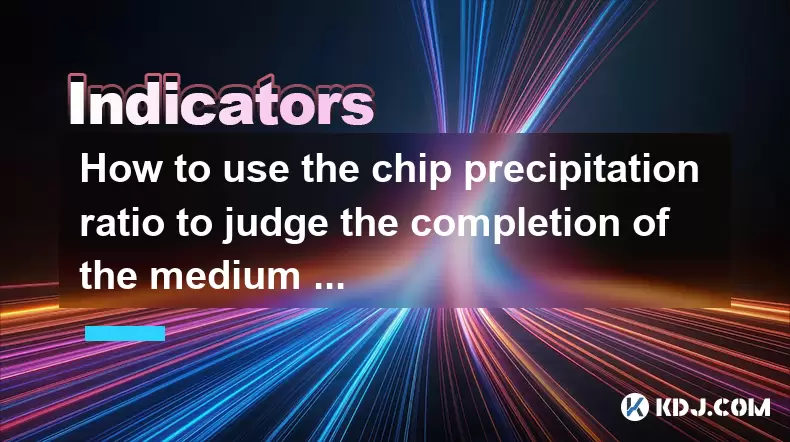
How to use the chip precipitation ratio to judge the completion of the medium and long-term bottom construction?
Jun 04,2025 at 03:36am
The chip precipitation ratio is a crucial metric used by investors to assess the accumulation of chips (or shares) at different price levels over time. This ratio helps in understanding the distribution of chips and can be a powerful tool for determining the completion of medium and long-term bottom construction in the cryptocurrency market. By analyzin...
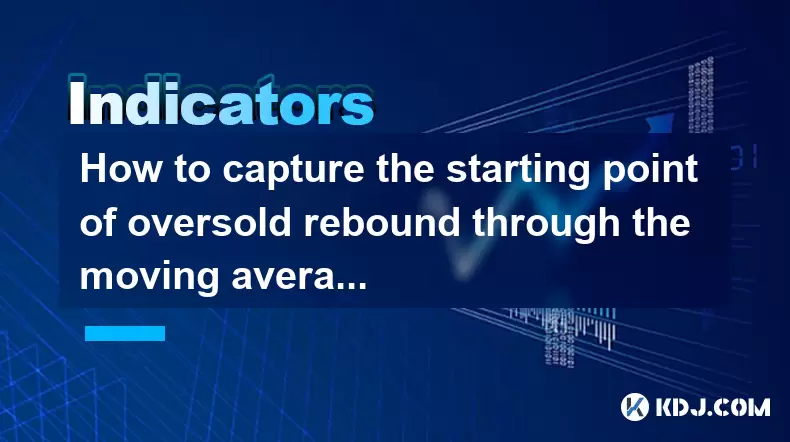
How to capture the starting point of oversold rebound through the moving average gravity reversal strategy?
Jun 04,2025 at 01:01pm
The moving average gravity reversal strategy is a sophisticated approach used by traders to identify potential entry points for buying cryptocurrencies when they are considered oversold. This strategy leverages the concept of moving averages to pinpoint moments when a cryptocurrency might be poised for a rebound. In this article, we will delve into the ...
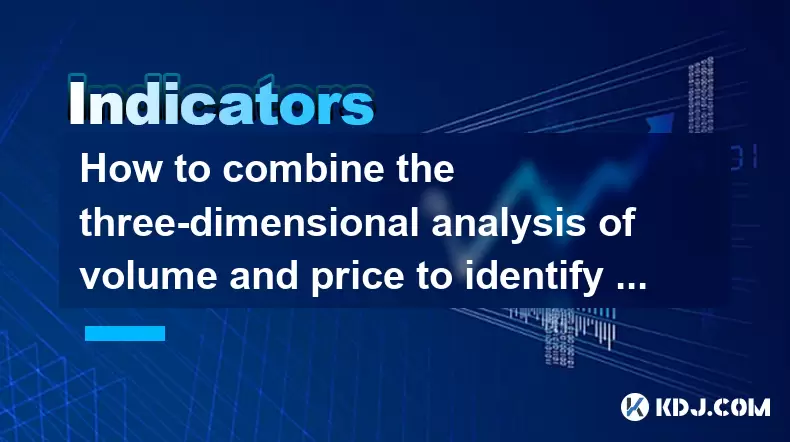
How to combine the three-dimensional analysis of volume and price to identify the golden buying point of breakthrough and retracement?
Jun 03,2025 at 11:42pm
In the dynamic world of cryptocurrencies, identifying the optimal buying points is crucial for maximizing profits and minimizing risks. One effective method to achieve this is by combining three-dimensional analysis of volume and price to pinpoint the golden buying points during breakouts and retracements. This article will delve into how to use this ap...
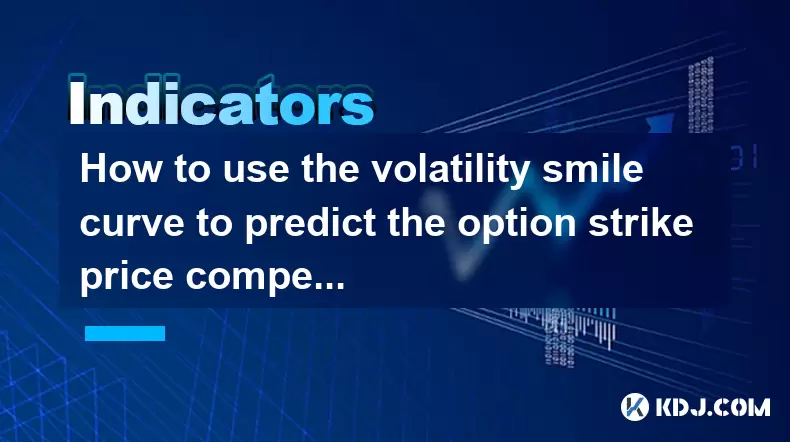
How to use the volatility smile curve to predict the option strike price competition area?
Jun 06,2025 at 01:01pm
The volatility smile curve is a graphical representation that shows the implied volatility of options across different strike prices for a given expiration date. It is called a 'smile' because the curve often takes the shape of a smile, with higher implied volatilities for options that are deep in-the-money or deep out-of-the-money, and lower implied vo...
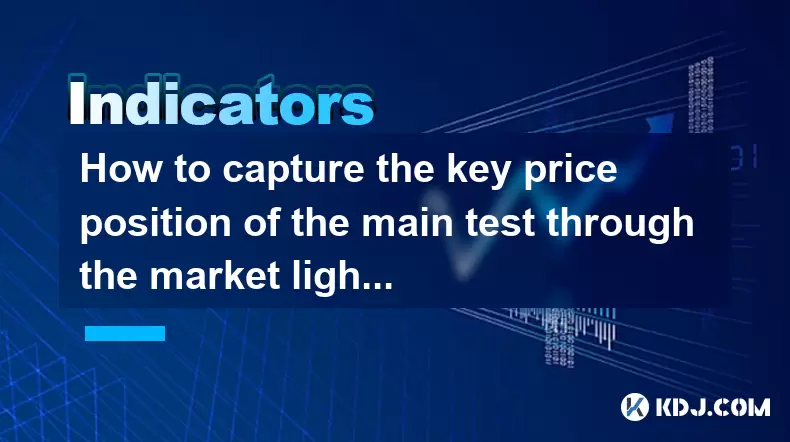
How to capture the key price position of the main test through the market lightning chart?
Jun 02,2025 at 06:07pm
Introduction to Market Lightning ChartThe market lightning chart is a powerful tool used by cryptocurrency traders to visualize price movements and identify key price positions. This chart type provides a detailed view of market activity, allowing traders to spot trends, reversals, and other significant price levels quickly. By understanding how to use ...
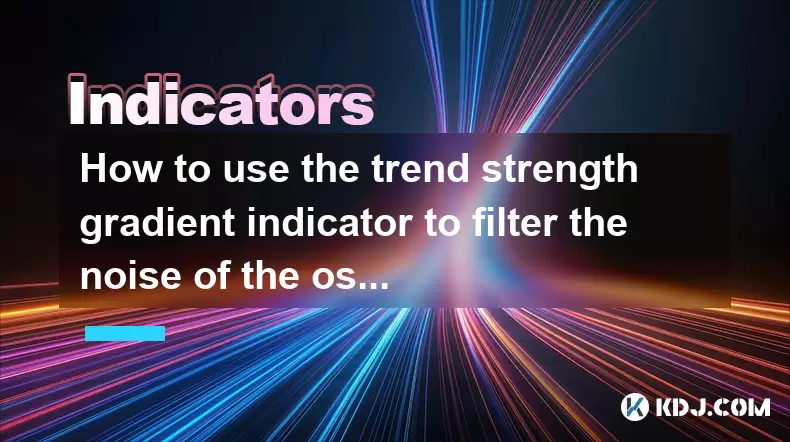
How to use the trend strength gradient indicator to filter the noise of the oscillating market?
Jun 06,2025 at 06:15pm
The trend strength gradient indicator is a powerful tool used by cryptocurrency traders to analyze market trends and filter out the noise that often accompanies oscillating markets. This indicator helps traders identify the strength of a trend, enabling them to make more informed decisions. In this article, we will explore how to effectively use the tre...

How to use the chip precipitation ratio to judge the completion of the medium and long-term bottom construction?
Jun 04,2025 at 03:36am
The chip precipitation ratio is a crucial metric used by investors to assess the accumulation of chips (or shares) at different price levels over time. This ratio helps in understanding the distribution of chips and can be a powerful tool for determining the completion of medium and long-term bottom construction in the cryptocurrency market. By analyzin...

How to capture the starting point of oversold rebound through the moving average gravity reversal strategy?
Jun 04,2025 at 01:01pm
The moving average gravity reversal strategy is a sophisticated approach used by traders to identify potential entry points for buying cryptocurrencies when they are considered oversold. This strategy leverages the concept of moving averages to pinpoint moments when a cryptocurrency might be poised for a rebound. In this article, we will delve into the ...

How to combine the three-dimensional analysis of volume and price to identify the golden buying point of breakthrough and retracement?
Jun 03,2025 at 11:42pm
In the dynamic world of cryptocurrencies, identifying the optimal buying points is crucial for maximizing profits and minimizing risks. One effective method to achieve this is by combining three-dimensional analysis of volume and price to pinpoint the golden buying points during breakouts and retracements. This article will delve into how to use this ap...

How to use the volatility smile curve to predict the option strike price competition area?
Jun 06,2025 at 01:01pm
The volatility smile curve is a graphical representation that shows the implied volatility of options across different strike prices for a given expiration date. It is called a 'smile' because the curve often takes the shape of a smile, with higher implied volatilities for options that are deep in-the-money or deep out-of-the-money, and lower implied vo...

How to capture the key price position of the main test through the market lightning chart?
Jun 02,2025 at 06:07pm
Introduction to Market Lightning ChartThe market lightning chart is a powerful tool used by cryptocurrency traders to visualize price movements and identify key price positions. This chart type provides a detailed view of market activity, allowing traders to spot trends, reversals, and other significant price levels quickly. By understanding how to use ...

How to use the trend strength gradient indicator to filter the noise of the oscillating market?
Jun 06,2025 at 06:15pm
The trend strength gradient indicator is a powerful tool used by cryptocurrency traders to analyze market trends and filter out the noise that often accompanies oscillating markets. This indicator helps traders identify the strength of a trend, enabling them to make more informed decisions. In this article, we will explore how to effectively use the tre...
See all articles
























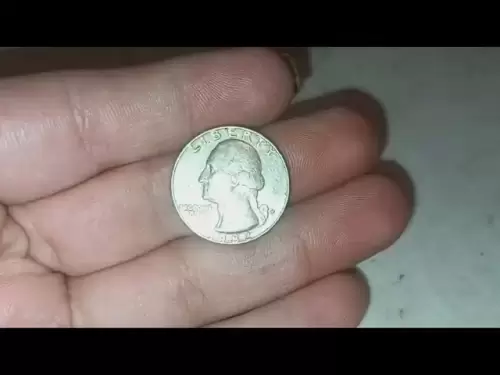

![[Financial Decryption] Stablecoin - The King of Cash in the Blockchain World: From USDT to USDC, Hong Kong's policy dividends ignite three major investment sectors, global case in-depth analysis and investment strategies [Financial Decryption] Stablecoin - The King of Cash in the Blockchain World: From USDT to USDC, Hong Kong's policy dividends ignite three major investment sectors, global case in-depth analysis and investment strategies](/uploads/2025/06/06/cryptocurrencies-news/videos/financial-decryption-stablecoin-king-cash-blockchain-usdt-usdc-hong-kong-policy-dividends-ignite-major-investment-sectors-global-depth-analysis-investment-strategies/68427d141fb0f_image_500_375.webp)






























































